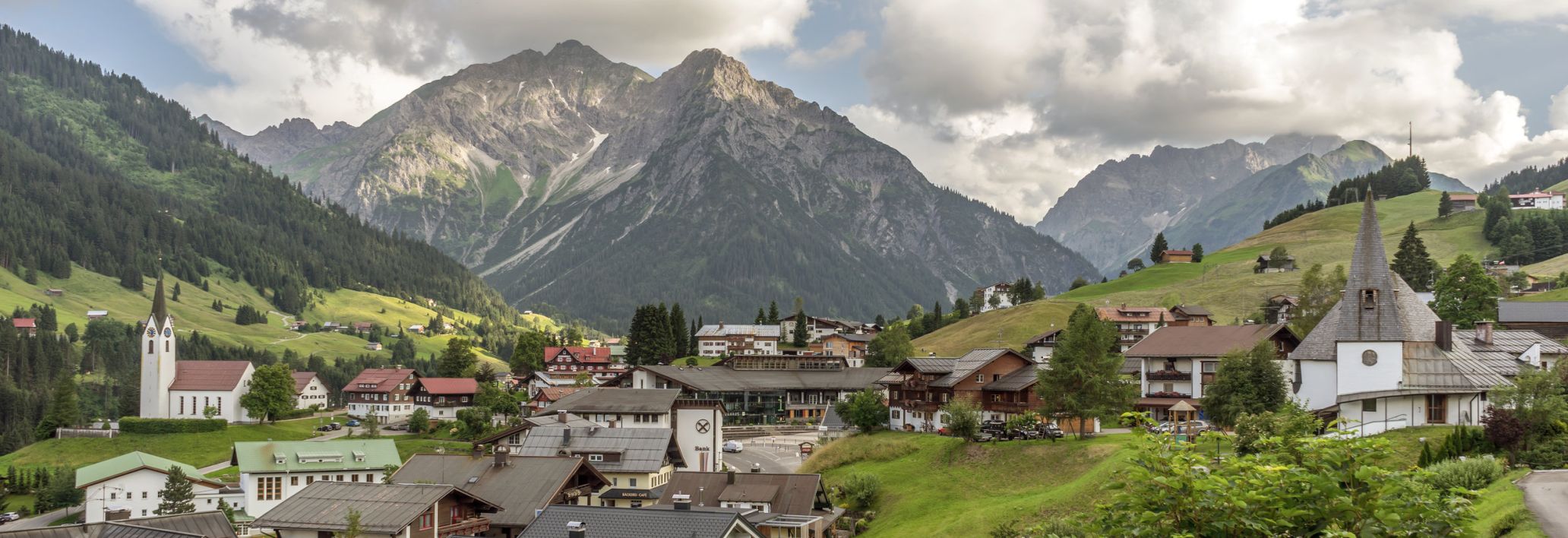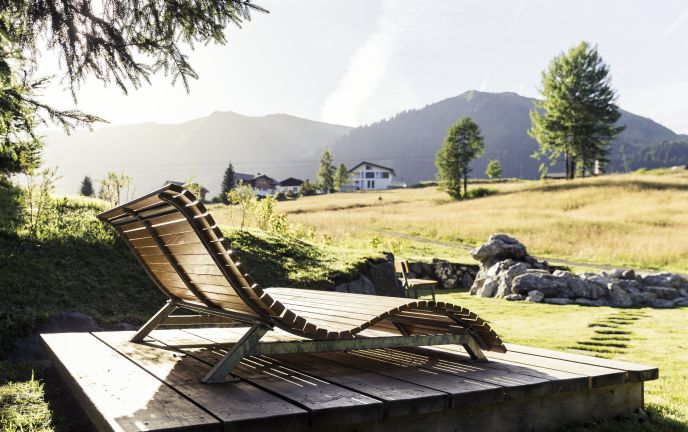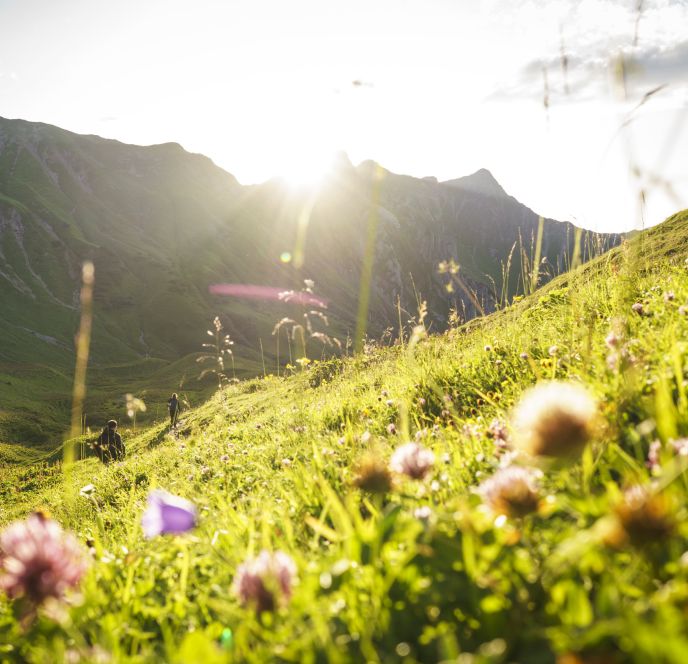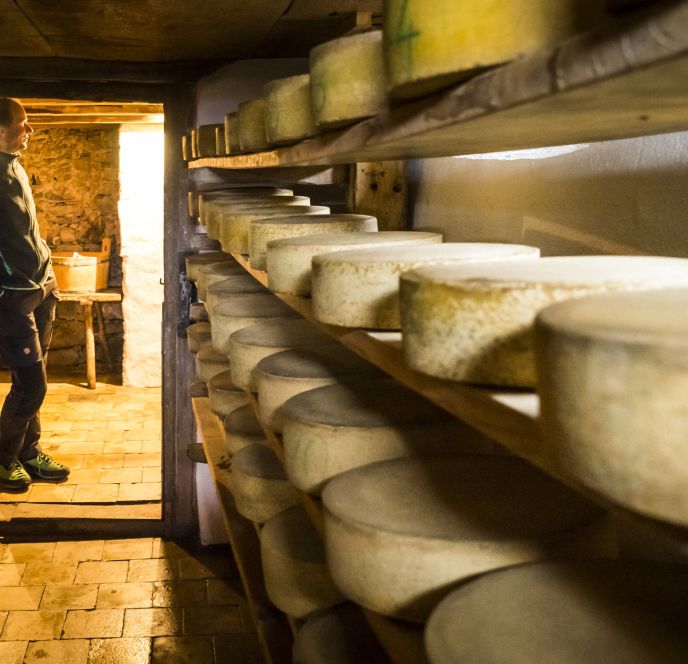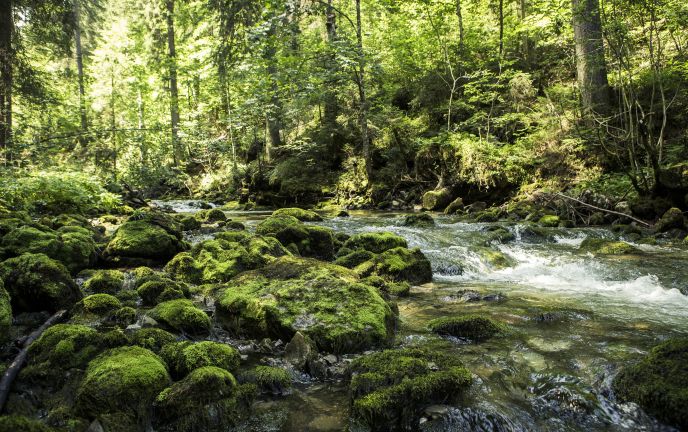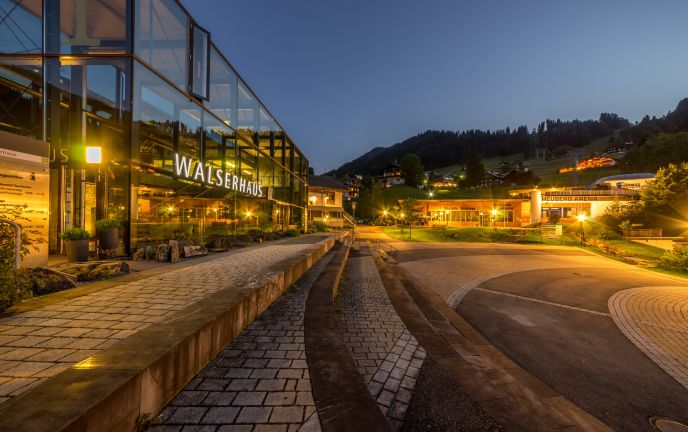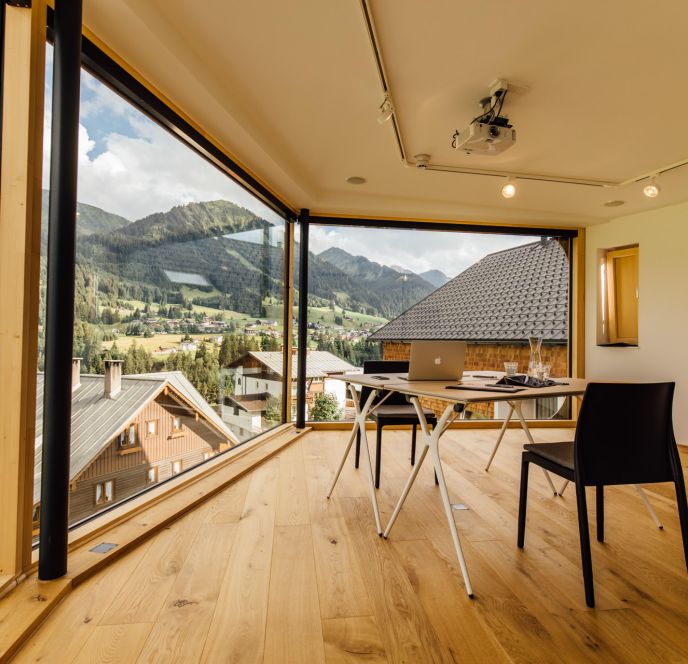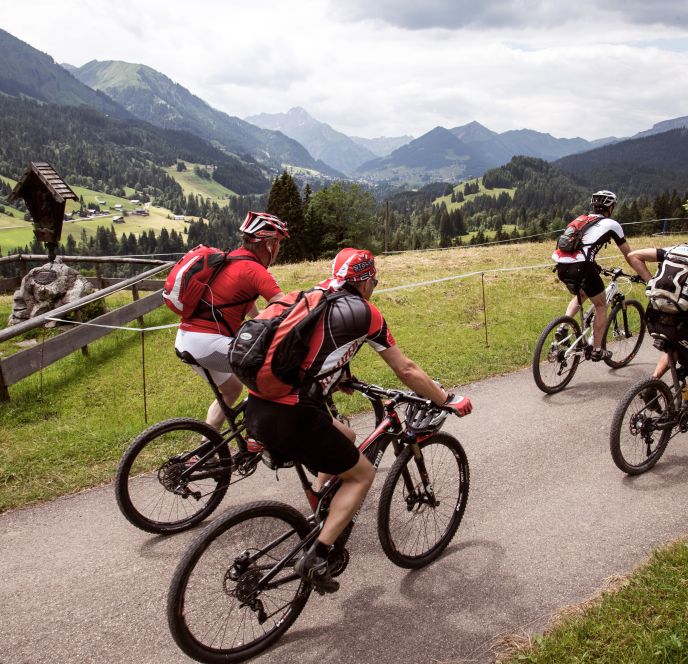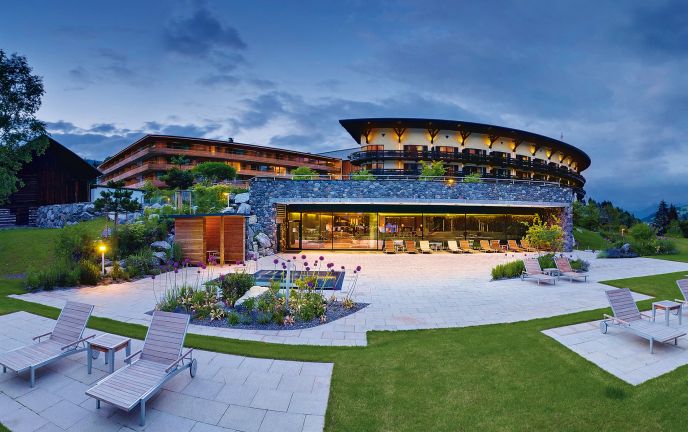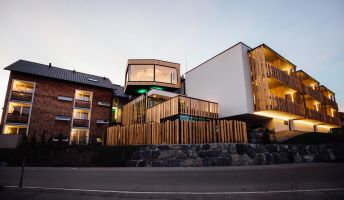Meetings in the Kleinwalsertal
Stretching out your legs on a ‘Güütschle’ (lounger) or ‘Bööchle’ (bench), feeling the fresh air flowing into your lungs, spending time in the moment – the wooden loungers and benches to be found throughout the Kleinwalsertal are always happy for hikers to take a rest on them. The vitality trails of the ‘Walser Omgang’ (‘Walser Circuit’) lead into the innermost part of the soul. They challenge you to ‘find your way’, ‘discover the diversity of life’ and ‘free yourself’! The walks lead through forests and to alps across borders and provide views right into the Allgäu. The paths follow the course of the Schwarzwasserbach and the Breitach. Wild water makes its way through the Breitachklamm and cuts bizarre structures into the rock, the deepest gorge in central Europe. Higher up, there are several via ferratas and climbing enthusiasts can conquer the Widderstein, Kanzelwand or the Hohe Ifen.

